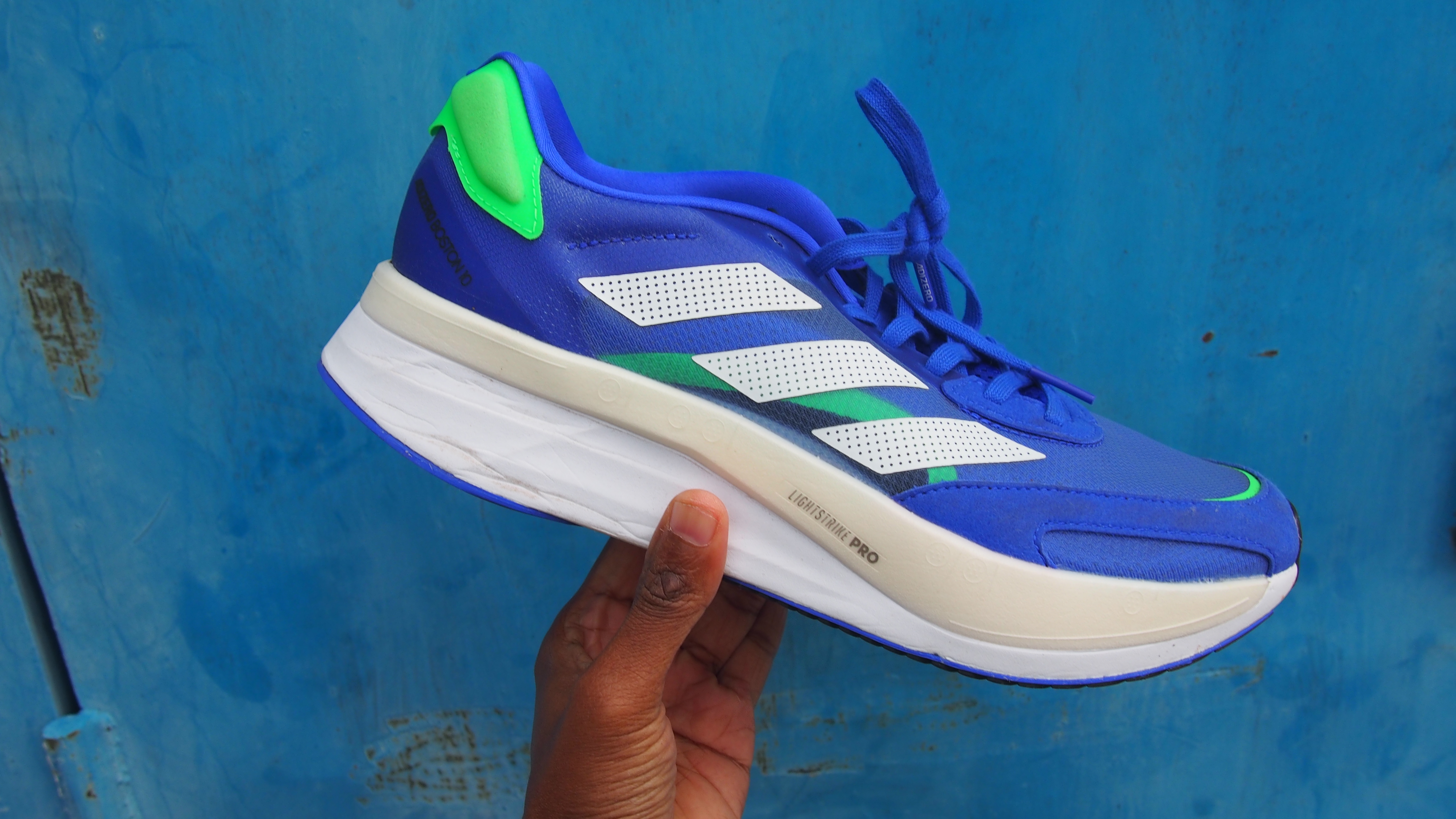
Sometimes, you want to buy something that seems really simple, only to fall down a rabbit hole of different options. If you’re buying one of the best iPhones, what’s the difference between an iPhone 16 Pro and an iPhone 16 Pro Max? On the other hand, if you’re looking for a smartwatch, do you need one with a blood oxygen sensor? Have you been missing out, not knowing your blood oxygen levels on an hourly basis this entire time?!
But top of the heap of “seemingly unnecessary complication” must go to the best running shoes. Trying to buy a running shoe, whether you’re training for a marathon or your local 5K, is fraught with buzzwords. Uppers, midsoles, foam, energy return, outsoles… the list goes on. It seems that running shoes are just as carefully designed as electronics.
Which, when you think about it, makes a lot of sense. Running shoes are supposed to protect your feet, each one equipped with 26 bones and 34 joints, from the rigors of pounding concrete, so they need to be highly engineered for both protection and performance.
To help you understand some of these complex terms and ideas when buying running shoes to help you out with your new year’s fitness kick, we tapped Harry Miles, director of footwear innovation for Athlete Concepts at Adidas, to talk us through the construction and different parts of a running shoe.
The basics
We asked Miles what readers need to know about running shoes when shopping online, and he broke the information down as follows:
“We usually break a shoe into two parts. To make a long story short, we have an upper and a bottom unit. The upper [focuses on] protection, fit, and comfort. In the bottom unit, we have a midsole for cushioning, dampening, and energy return, with a little bit of stability there too. And then we have an outsole, which is for traction and for durability.”
So the upper is the, well, the upper part of the shoe, comprised of the fabric cover for your feet, laces, tongue, and so on. The bottom unit consists of a removable insole, a midsole – which has the job of protecting your feet and adding a spring in your step for performance – and an outsole to provide grip and protect the midsole from the road. Below, Miles goes into each part in more detail.
The upper
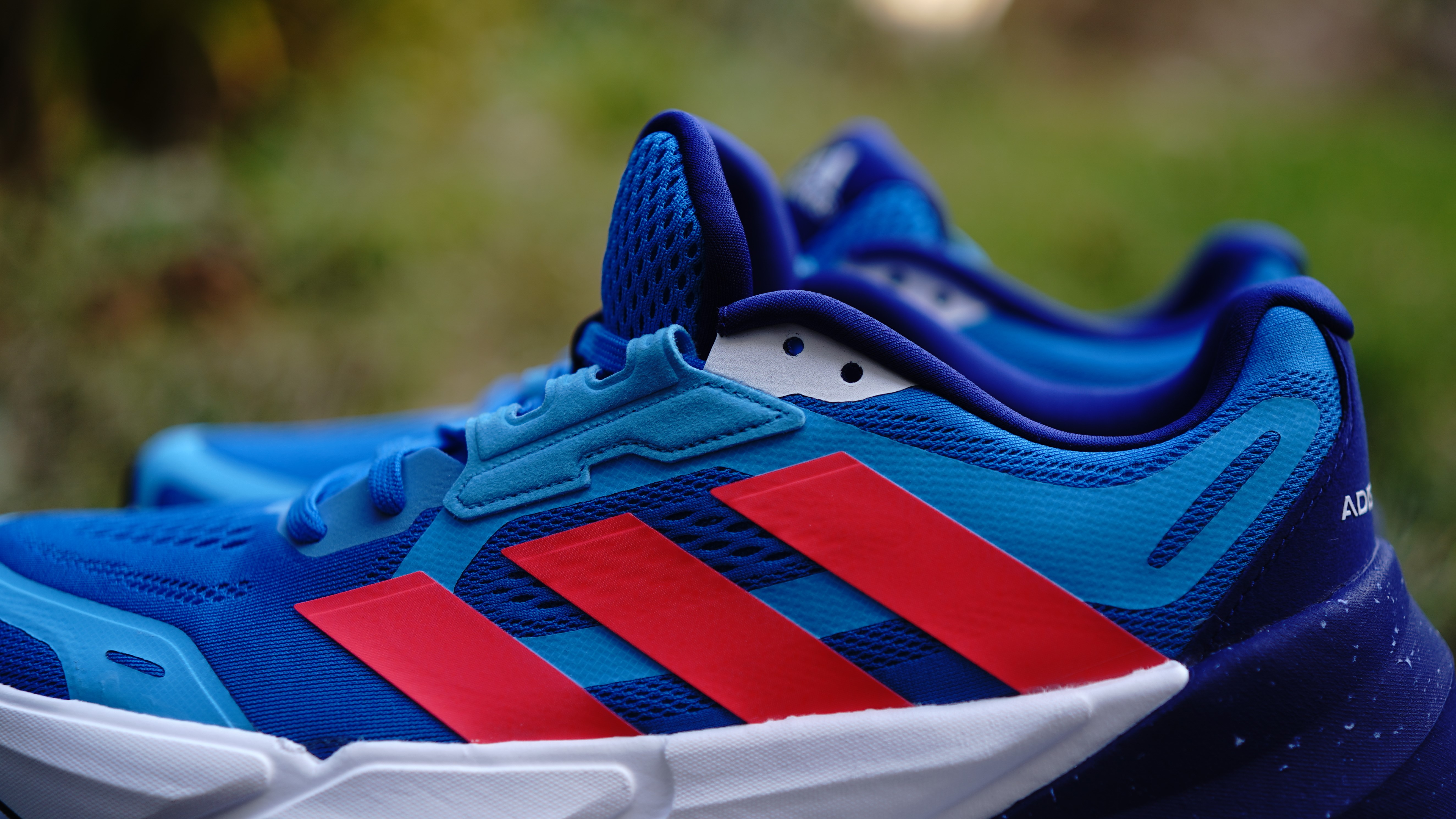
Miles describes the upper unit as “a combination of lots of different pieces”. However, he argues it’s the most important piece of the overall shoe, especially when we talk about comfort, fit, and support.
Miles’ advice for people buying a running shoe is to “look for something that is comfortable, fits well and you’ll be able to run confidently in”, stressing the importance of fit. “What we'd recommend is something comfortable and also something that doesn't get in the way of your natural motion. It’s really important to allow the foot to expand and also contract, as it does when you're running, and of course, it needs to be something that fits your shape. Whether it's a wide shoe or a regular shoe, it needs to be something that you put on and immediately have that sensation of comfort and good support.”
Whether you’ve ordered your shoe online, or are in a store, make sure the shoe fits well before you run outside through some puddles and end up unable to return it. If you have a wide foot, look for the “wide” keyword. If your foot fits in regular running shoes comfortably, make sure you still try a shoe on to ensure it fits properly. Don’t be fooled by the way it looks!
“Whether you're in a store or whether you're in the online site, a lot of this will be in the details,” says Miles. “A shoe that's slightly shorter but stretches more still might fit better. So what we would definitely recommend is also that moment of truth when you put it on, to not be too influenced by how it looks before you put your foot in it, because something might look a little bit short or a little bit long [but fit very well]. If it stretches, it might be just right.”
The insole
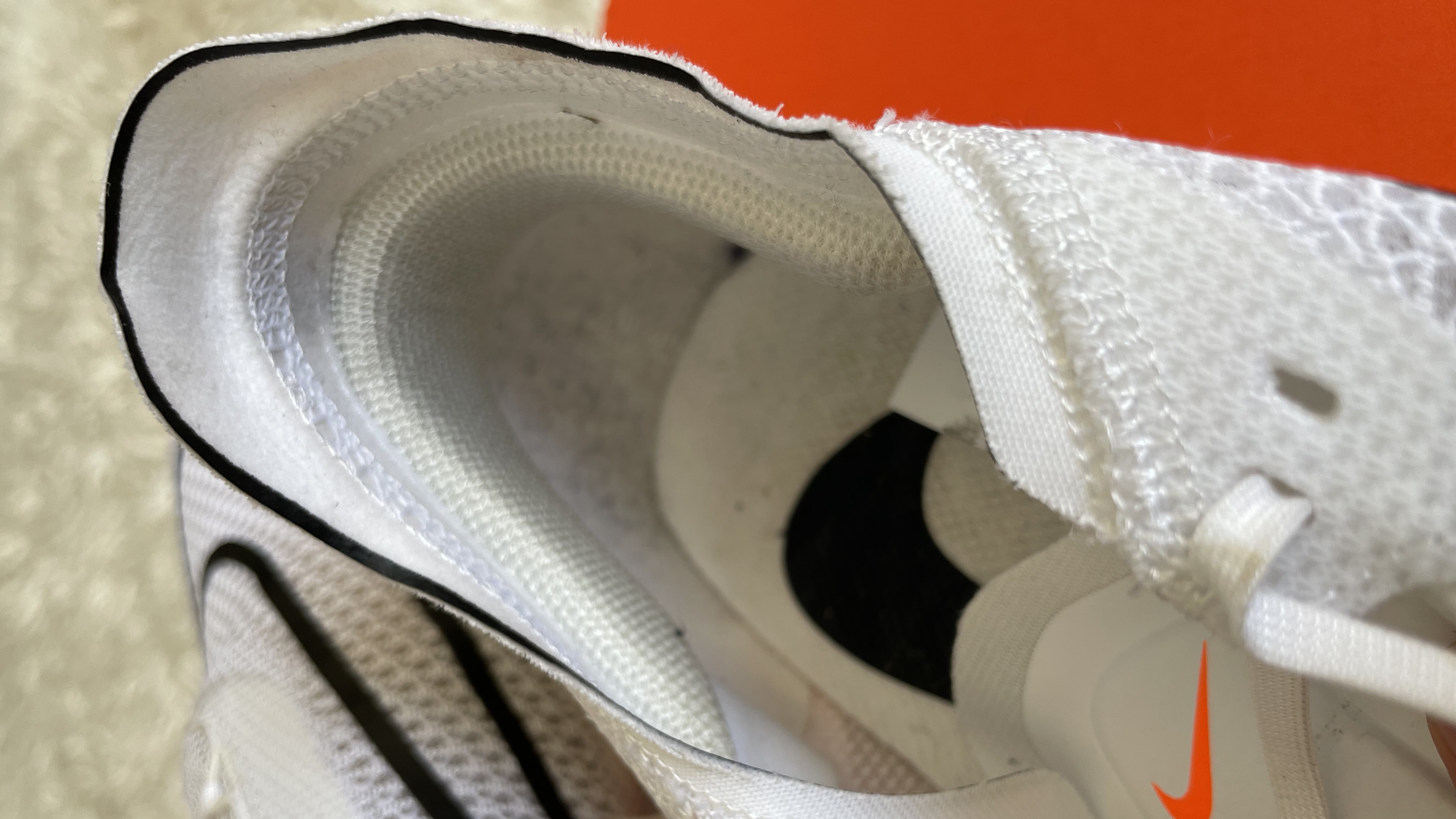
“First, we have what we call a sock liner, or an insole, which is really there just to protect and to sit between a manufacturing piece which is attaching the upper to the rest of the shoe. It’s always removable, which is also important in case you have an orthotic insole to replace it.
“We try and make sure the sock liner we put in the shoes is in the same ballpark thickness as a regular orthotic that you might be prescribed from an orthopedic doctor.” As he tells us this, Miles lifts the insole out of the Adizero EVO SL he’s holding for emphasis. If you require a special insole, it’s good to know running shoe designers have taken the thickness into account.
The midsole
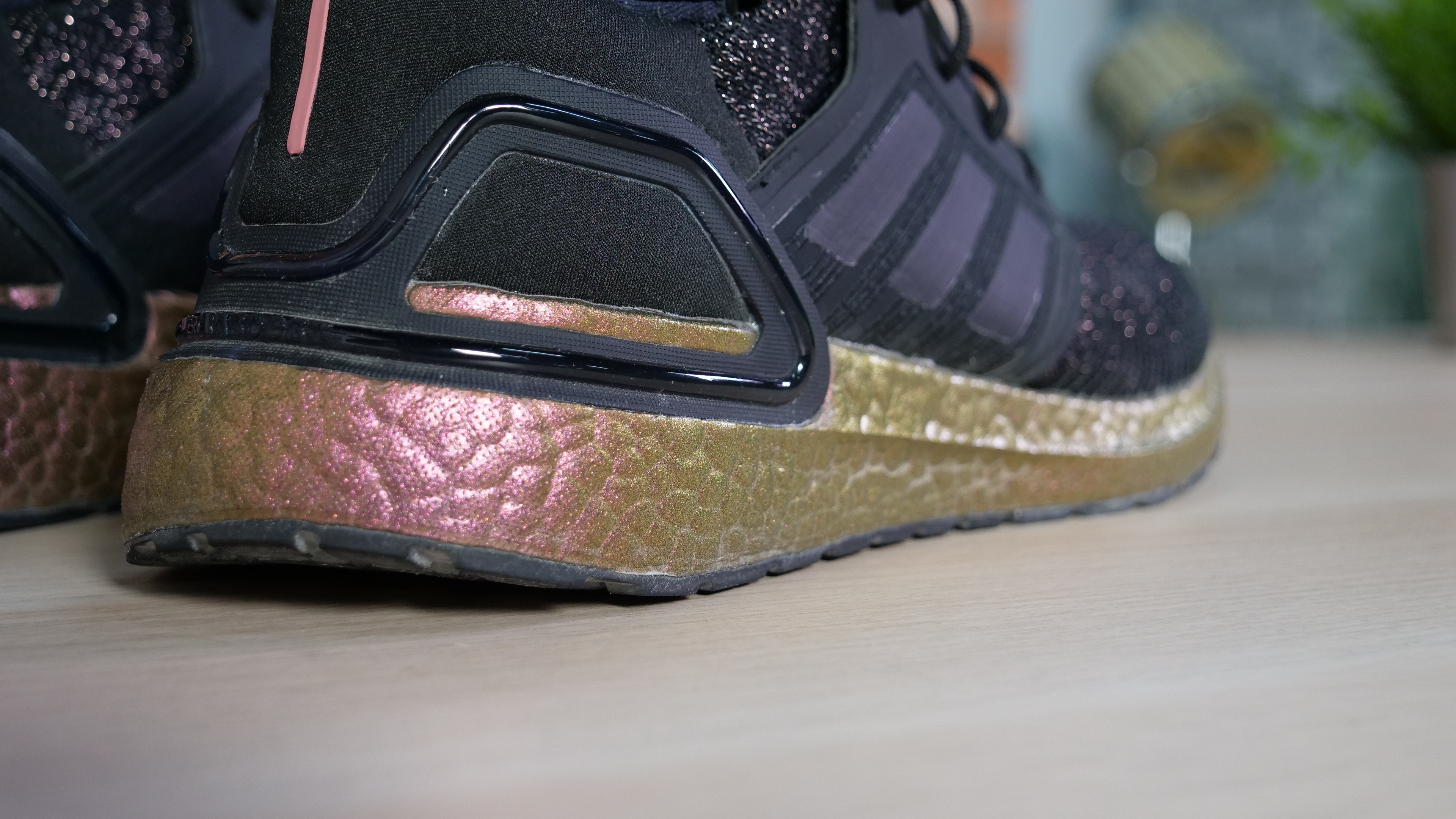
“We call [the midsole] kind of the engine room of the shoe. This midsole usually will be made up of foam. When we talk midsole, what we talk about here is the properties of cushioning. Cushioning is deformation.,” Miles tells us. “So how much ‘squish’, or how much difference do you get between a static condition and when you're running. We know that when you hit the ground, through Isaac Newton, every force and every action has an equal and opposite reaction. You put force into the ground, and the ground gives you that force back.
“You'll see across a lot of shoes that we talk about ‘energy return’. All of the energy that is stored in the landing phase, inside the midsole, is stored and then returned at a high rate so that the runner gets that little extra push and a little extra bit of energy that they stored in the shoe. They get that in their next step. And you will also feel, hopefully, that gives this sensation of energy return and a little bit more fun and spring in your step.”
Many brands have their own keywords and material names when it comes to the midsole: Saucony calls it PWRRUN foam, Nike calls it ZoomX, ASICS calls it FlyteFoam, and so on. But they all add up to different compositions of materials doing similar jobs: cushioning your landing, storing the energy when your feet squish the foam, and providing a satisfying bounceback – the “energy return” to help make you faster.
The outsole
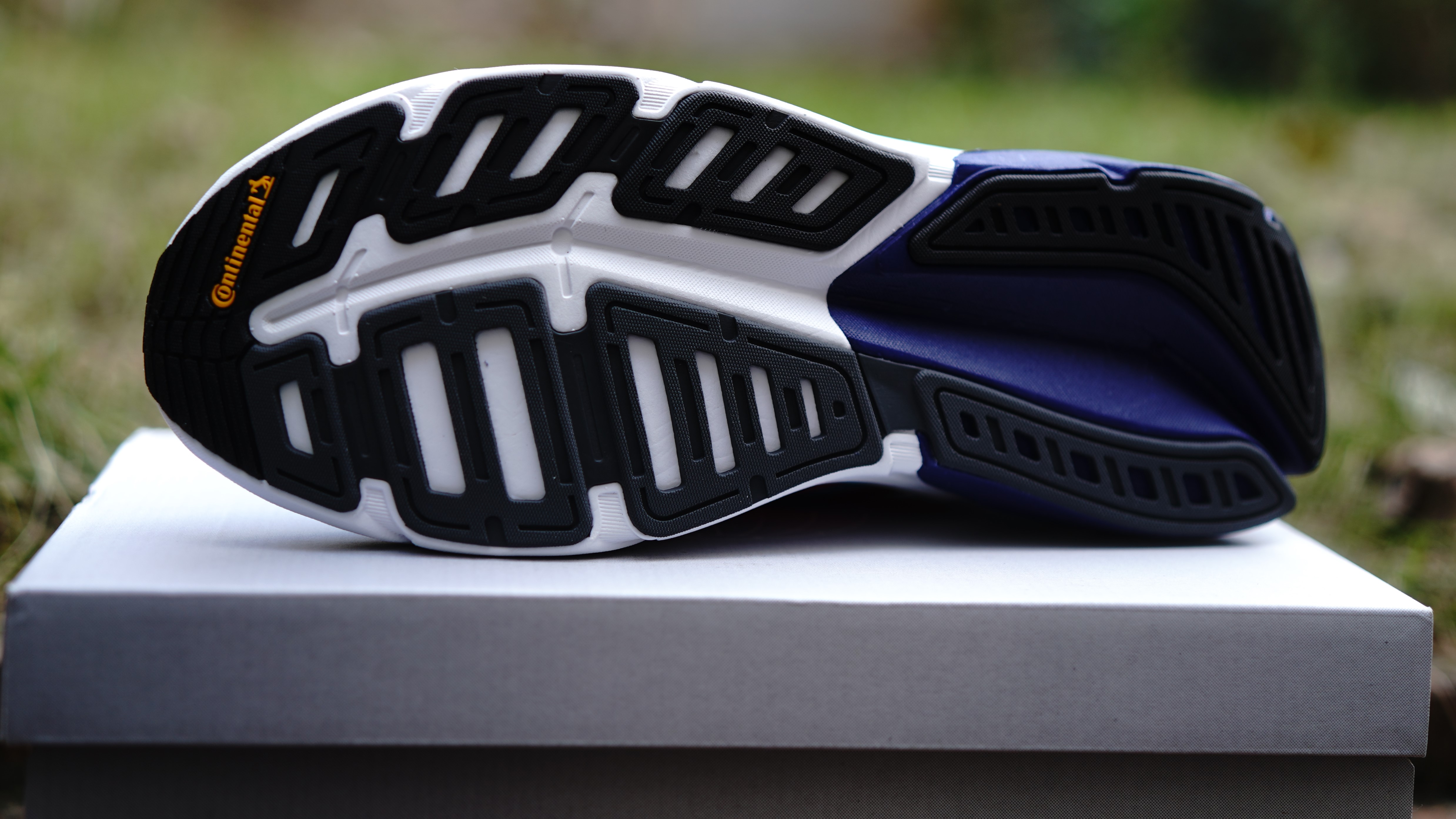
“The outsole has two very distinct purposes. First, traction in wet and dry conditions.” Miles tells us Adidas partners with Continental rubber, which makes car tires, for “outstanding” traction in both wet and dry.
“The second reason that we have an outsole on a shoe is to protect that midsole and increase the durability of the shoe. The foam is amazing for what it's there to do, which is cushioning, energy return, and stability, but it's not great if we were to use it directly in contact with the road.
“In all of our shoes, you'll see these rubber elements on the bottom of the shoes, and it's there to provide the grip in the wet and dry, but also make sure that the shoe has longevity. And that's also something that we pride ourselves on at Adidas.”
Hopefully, Miles has provided a little more clarity on the inner workings of a running shoe, giving you the knowledge you need to shop the sales and pick a shoe with a little more confidence. If you’re keen to get started on your running journey, we recommend also checking out our best fitness trackers and best running watches lists.







